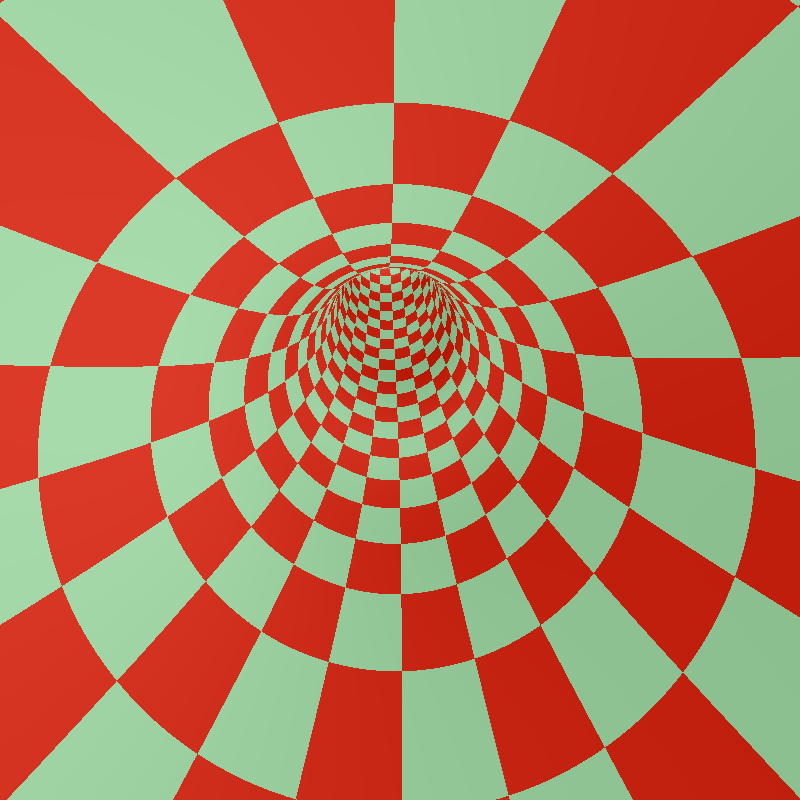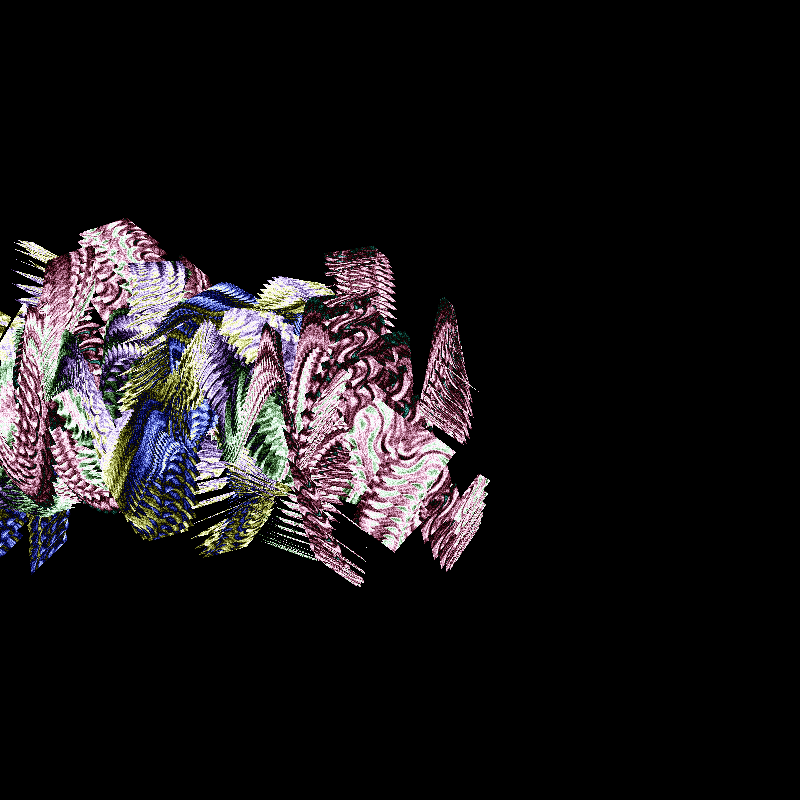
Finding Harmony Through Color and Movement: A Conversation with Mario Carrillo
written by fx(press)
For our audience who isn’t already familiar with you, can you give us a little background about yourself? How did you come to generative art?
I'm Mario Carrillo, and I’m from Culiacan, Sinaloa, Mexico. From an early age, computers fascinated me, evolving from toys to tools as I delved into programming and web development. Although I pursued a Bachelor's in Engineering and Technology, the conventional tech path didn't quite resonate with me until I discovered its intersection with creativity and art.
My journey took a turn when I realized the potential for code to become a medium for artistic expression. Despite not formally studying arts, I've always had a passion for creativity, exploring music through guitar, piano, and violin and immersing myself in classical music and dance. The fusion of technology and art became a driving force, sparking a profound interest that led me to the world of generative art.
As I explored creative coding, generative art became a natural and exciting progression. The ability to create art through code, blending digital and physical interactive media, opened new dimensions of expression. It's a practice that allows me to be both technical and artistic, and I'm grateful to have found people that resonate with this very unique approach.
In relation to fxhash, I have created just two projects. The first one, called Wormholes, was a proof of concept for when fxhash was just being released. The second, Runaway, materialized as part of a community initiative for Genuary23 earlier this year. There are other works I have from the Hic et Nunc era and soon after when Foundation came along. However, I consider my most important work my daily practice, which started approximately three years ago. It is within this habit that most of my learnings and ideas have blossomed into artworks later on.

What motivates you to continue exploring generative art? How often are you surprised by your code and its creative possibilities? Is there anything you feel is entirely unique to your approach to generative art?
My drive is deeply rooted in the themes I discussed earlier — particularly, discovering the relationship between creativity and technology. This is what propels my curiosity across a spectrum that includes creative coding, generative art, interactive media, installations, and an array of genres that I aim to explore throughout my journey as an artist.
What I find most captivating about creating art is the ecstatic moments of revelation that happen when I tweak a number, adjust a frequency, or play with colors, and suddenly, a completely new work unfolds before me. These surprises don’t come out often, but the more I spend time with the work, the more frequent these moments arise and become a rewarding part of the creative process.
I wouldn’t claim to have a distinctive (technical) approach to generative art, but I strongly believe that our diverse backgrounds, hobbies, life experiences, and perspectives shape the way we approach our work. This is also what makes generative art so compelling to me. It’s a space where artists from fields as varied as architecture, design, arts, engineering, and more come together and enrich the space as a whole.
What I find most captivating about creating art is the ecstatic moments of revelation that happen when I tweak a number, adjust a frequency, or play with colors, and suddenly a completely new work unfolds before me. - Mario Carrillo
Can you elaborate on the concept behind your fxhash 2.0 release, Confluencias?
Confluencias symbolizes harmony through movement. The interplay of lines and colors is there to explore an organized and continuous system. While my intent is to elicit a sense of calm through these elements, I believe harmony can be perceived uniquely by each individual. I'm delighted to learn whatever emotions or thoughts it triggers for them. This generative artwork is part of my ongoing research and practice, where I present a serene animation where form and color coordinate seamlessly.
Can you walk us through some aspects of the technical and creative processes used for this work?
For this particular artwork, my approach differed from drafting with paper; I began by sketching with code. It was only when I reached a point where the elements clicked into a harmonious composition that I decided to pursue that direction. While I do occasionally draw sketches or jot down ideas that come from day & night dreams, my inclination leans heavily towards the process of “painting” with code until I find something captivating that resonates with me.
Outputs from Confluencias show a diverse range of color combinations for each output, how did you ensure the color combinations are harmonious?
The color combinations come from a set of procedural palettes that I have curated from my daily practice. I think what might give the project a feel of diversity is the blend of colors with different line systems. When exploring this artwork, I defined three simple line variations: straight, curved, and spiral. That’s really it, but I think the richness of its variations unfolds through the different arrangements, colors, lights, and motion orchestrated by the system.
How do you see your practice evolving in the context of generative art and NFTs? What future do you envision for yourself as a generative artist?
My answer goes beyond the context of NFTs, but I do see myself exploring more different mediums in a way where I build a sustainable practice by balancing personal projects, commercial work, collaborations, and other pursuits that align with my vision.
The future's a bit of a mystery, but one thing's for sure — I'll stick to creating stuff I adore, just like any computational/generative/digital/visual (you name it) artist would.
Where do you see this medium going in the next 5, 10, or 20 years? Is institutional acceptance important to you?
It’s tough to predict even one year ahead since the space seems to progress exponentially. We already see much of it has been “institutionalized” which has pros and cons. I do think, as time passes, that it’ll be natural to see more artists, collectors, critics, and enthusiasts contribute to the space.
When it comes to mainstream media categorizing generative art as fine art, I think there will always be disputes around it. "No me quita el sueño," as we say in Mexico, meaning that it doesn't keep me up at night. Personally, I believe it’s beyond my control, and I’d rather focus on aspects I can influence, such as creating more art, contributing to the medium, and the like.
Runaway 🏃♂️ #17

Interestingly, I've come to realize that my appreciation for an artist's work tends to grow, especially when I've had the opportunity to meet them and build a real-life connection. It adds an extra layer to the artwork itself. - Mario Carrillo
Do you collect generative art from other artists as well? What do you like, or what types of work appeal to you most?
Certainly, there are moments I wish I collected more. While I'm drawn to computer-animated art, the sheer diversity in the creative space is something I truly love – from static pieces to those resembling traditional mediums like painting, poetry, 3D works, simulations, interactive art, physical and beyond. I genuinely believe there's space and admiration for every form. Interestingly, I've come to realize that my appreciation for an artist's work tends to grow, especially when I've had the opportunity to meet them and build a real-life connection. It adds an extra layer to the artwork itself.
How much do you think about the chain your artwork is minted on? Does it matter to you now, and do you think this will be more or less important in the future as blockchains evolve?
The current landscape offers multiple platforms on different chains for creating generative art, and I find it beneficial to have options tailored to diverse works and audiences. My guide has been to select chains where I identify with the community and values, with Tezos and Ethereum being my current choices. It may not be a priority for other artists who enjoy exploring new ecosystems, but I personally inquire about this alignment before committing to my work. Looking ahead, I believe the significance of blockchain choice will continue to evolve as the technology progresses.
—
Mario Carrillo is a creative coder and visual artist from Culiacan, Sinaloa, Mexico. He is interested in exploring the perception of form, motion, and color through graphics and code.
Confluencias is available to mint on fxhash now.